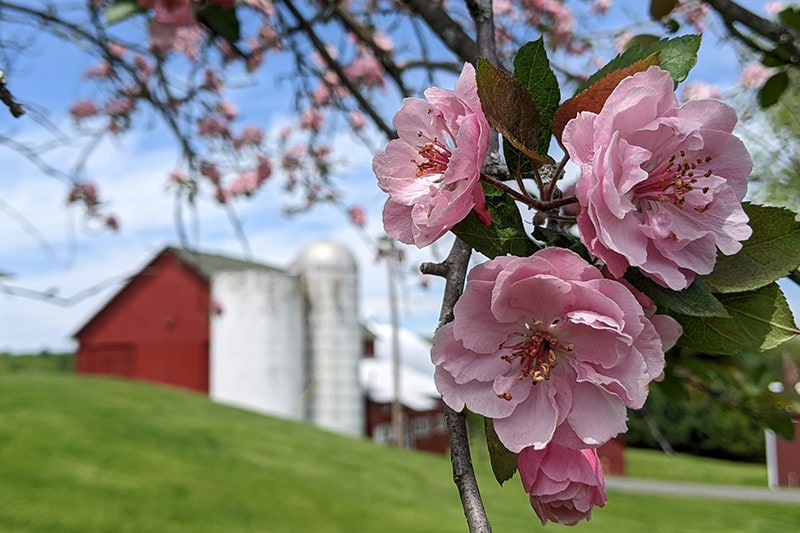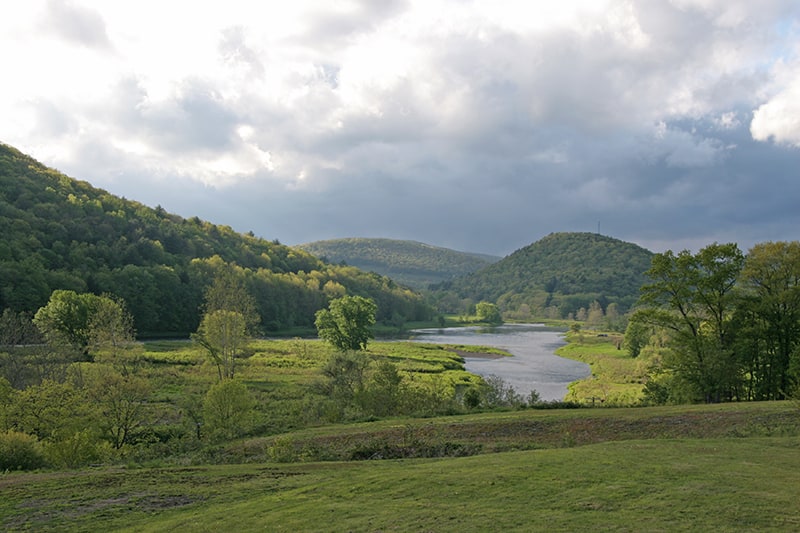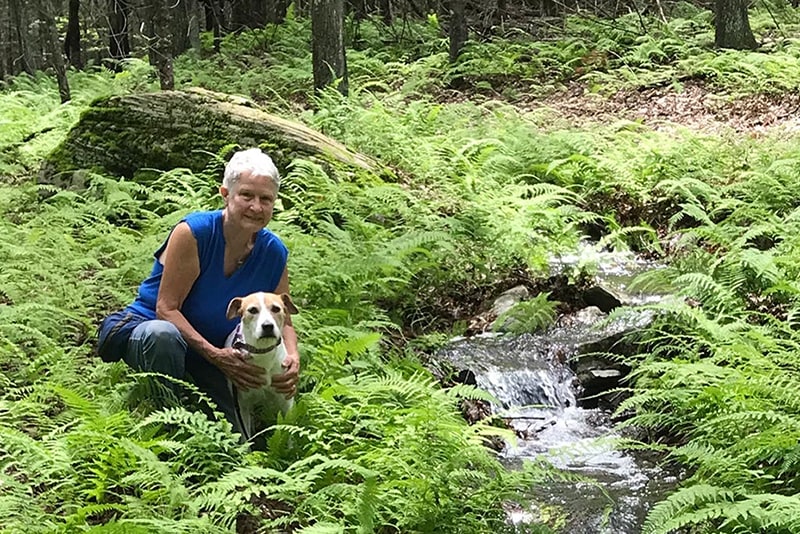Caring for the ‘River of Dreams’
[div id=key-value-images]
[end-div]
“I’ve always been into cleaning up things, usually messes created before I was born…and whenever I would clean up vacant properties along the river, pretty soon I’d be able to buy those properties. It was a nice thing that was happening,” says Tom. After moving to Hancock, Tom began cleaning up a two-mile stretch of river downstream. Eventually, he was able to buy parts of an old railroad corridor adjacent to the river, as well as a stretch of river including Partridge Island.
The story begins a little while before that, however. When Tom lived in a landmark apartment building on the Upper West Side of Manhattan, he became involved in a rent strike that lasted 17 years. Soja, who grew up in West Virginia, never liked living in New York City very much, so when a settlement with his landlords was finally reached in 1999, he started looking for real estate in a more rural environment. He and his wife, Syble, began their search in Bucks County, PA, where they quickly realized that the kind of property they wanted was way beyond their means. But they also realized that they really wanted to live on the Delaware River, and that ultimately led them to Hancock, NY, where the East and West branches of the Delaware River meet.
Tom describes how they came to buy their first riverfront property in “Green Flats,” where they ended up building their house. “Everyone in the town of Hancock had been waiting for that property to come up for sale and I just happened to show up the very day it came on the market. It was sheer luck,” he says. Or perhaps fate.
Partridge Island now provides Tom more access to the river for his cleanup efforts. He spends an average of one day a week lugging tires out of the river and carting bags of garbage to his local landfill. Much of his effort focuses on clearing debris dumped over the banks along Old Route 17. At one spot alone, he claims to have taken out “300-400 bags of garbage, dozens of tires, garbage cans, you name it…” His biggest haul was a 200-pound truck tire from Partridge Island, and he had removed “tons of flood debris” from the Big Flood of ’06. “If people litter along the highways, all the little streams carry the debris, washing it down into the river. So I clean up this whole area, as a preventive action,” explains Soja.
The East Branch of the river, which Tom believes is the “true source” of the Delaware and what he calls the “River of Dreams,” differs from the colder West Branch favored by trout fishermen. Its warmer waters make the East Branch ideal for swimming and kayaking, but its steep banks discourage extensive real estate development. This body of water and its banks are home to deer, foxes, turkeys, snapping turtles, geese, grouses and numerous other birds, and even bears.
According to Tom, the Delaware Highlands Conservancy has done “a fabulous job identifying the trees on the property. Apparently this is a diverse animal and plant species corridor,” he explains. Initially attracted to do a conservation easement because of the tax benefits, Tom now has an even greater appreciation for the important protection that action can provide for this precious river. By protecting his riverfront and river island property, Tom can be assured that these lands will never be developed, denuded of the trees that provide such a valuable buffer for the river, or compromised in the habitat they provide for the wild creatures that thrive there. Protecting his land with a conservation easement has taken Tom’s role of “keeper of the river” to another level.
By Barbara Lewis










